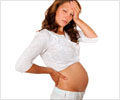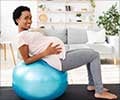Do’s and Don’ts after delivery
Immediately after baby’s birth, relax the body by lying flat for 30 minutes, twice a day. This will help to minimize discomfort, reduce swelling and taking off extra weight from pelvis and lower abdomen.
- Immediately after a vaginal birth or an attempted vaginal birth, icing the perinium helps to reduce pain and swelling. Ice should be placed inside the lady’s pad for 20 minutes every 2-3 hours. This can be continued until pain and swelling cease.
- The lady should wear firm supportive underwear to support her perineum and lower abdominals. This helps in the healing process and reduces pain.
- The most comfortable way for a lady to get into and out of bed is log roll. Bend the knees and roll onto one side. Keep the shoulders and hips in line. Slide the feet over the side of the bed and push oneself up using both hands in front of body.
- A 30 minute walk each day has been shown to improve general health and well-being.
- Don’t do jerky or twisting movements.
- Try and avoid constipation and straining when on the toilet. Drink plenty of fluids before and after exercise and otherwise as well; between 1.5 and 2 litres of water each day.
- Avoid drinking too much caffeine. Eat plenty of high fibre foods (e.g. fruits, vegetables). Don’t ignore bladder or bowel urges. Avoid straining bladder and bowel.
- Avoid wearing tight clothes. Loose clothing help in easing breathing process.
- Sit leaning forward, with elbows on knees; allowing tummy muscles to relax.
- Dieting is never recommended to lose weight, especially if the mother is breast-feeding. It can lead to excessive tiredness and depression. A depressed pregnant woman faces twice the risk of preterm delivery than pregnant women with no symptoms of depression.
A comprehensive plan of wellness even before conception including a sound sleep, balanced and healthy nutrition, physical therapy routine, and pursuing things that give happiness are crucial components to a healthy motherhood.
Absolute Contraindications to exercise
There are cases in which it is not safe for the mother to exercise. The mother is recommended not to exercise if she has:
- Preg. Induced HTN BP >140/90 mmhg.
- Diagnosed heart disease IHD,RHD,CHF.
- Premature rupture of membrane.
- Placental abruption.
- History of preterm delivery.
- Recurrent miscarriage.
- Fetal distress.
- IUGR.
- Incomplete cervix
- Thrombophlebitis pulmonary embolism.
- Pre-eclampsia
- Polyhydraminos / oligohydraminos
- Acute infection
Relative Contraindications to exercise
Pregnancies should be reviewed carefully if the mother has:
- Anemia's or other blood disorders
- Thyroid disorder
- Dialated cervix
- Extreme obesity / underweight
- Breech presentation during third trimester
- Multiple gestation
- Ex. induced asthma
- Peripheral vascular disease
- Diabetes
A pregnant woman should cease exercising and contact her consulting physician if she experiences:
- Vaginal bleeding
- Dyspnoea before exertion
- Headache
- Chest pain
- Muscle weakness
- Calf pain or swelling (need to rule out thrombophlebitis)
- Preterm labor
- Decreased fetal movement
- Amniotic fluid leakage












